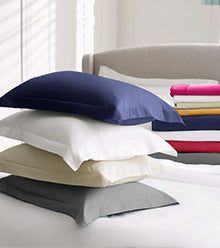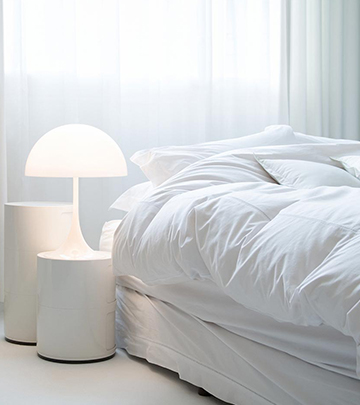Blankets play a crucial role in providing warmth and comfort, but over time, they inevitably face the challenge of stains and odours. Whether it's spilt food, stubborn ink, or lingering smells, knowing how to tackle these issues is essential for maintaining the longevity and hygiene of your blankets.
In this comprehensive guide, we will explore quick action tips for fresh stains, specific strategies for dealing with different stains, effective odour elimination techniques, blanket washing dos and don'ts, drying methods, managing allergens, and conclude with frequently asked questions to address common concerns.
Quick Action Tips for Fresh Stains
The key to successful stain removal lies in swift action. Here are some quick tips to tackle fresh stains effectively:
- Blot, Don't Rub: When faced with a new spill, resist the urge to rub the stain vigorously. Instead, gently blot the affected area with a clean, absorbent cloth to prevent the stain from spreading.
- Cold Water Rinse: Rinse the stained area with cold water as quickly as possible. Hot water can set the stain, making it more challenging to remove later.
- Avoid Heat: Refrain from using hot air or direct sunlight to dry a stained blanket, as heat can set the stain permanently.
Dealing with Specific Stains
Different stains require different approaches. Let's delve into practical strategies for tackling various types of blanket stains:
Food and Beverage Stains
- Pretreatment: Pre-treat food and beverage stains by dabbing the affected area with mild detergent and cold water. Allow it to sit for a few minutes before rinsing.
- Enzyme-based Stain Removers: Consider using enzyme-based stain removers, as they are highly effective in breaking down organic stains. Follow the product instructions for optimal results. Shop sherpa blankets from Inspire Homeware.
Oil-Based Stains
- Cornstarch or Talcum Powder: Absorb excess oil by sprinkling cornstarch or talcum powder on the stain. Let it sit for a few hours before brushing it off and laundering the blanket.
- Dishwashing Liquid: Apply a small amount of dishwashing liquid to the oil stain, gently rubbing it in. Wash the blanket as usual; the detergent will help lift the oil.
Ink and Dye Stains
- Isopropyl Alcohol: Dab the ink stain with isopropyl alcohol using a clean cloth. Blot the stain, starting from the outer edges towards the centre. Rinse thoroughly afterwards.
- Lemon Juice and Salt: Create a paste using lemon juice and salt, and apply it to dye stains. Let it sit for an hour before washing the blanket. The acidity of lemon helps break down the dye.
Biological Stains (Blood, Sweat, etc.)
- Hydrogen Peroxide: For blood stains, apply hydrogen peroxide directly to the affected area and let it bubble. Blot the stain with a clean cloth, rinse, and launder the blanket.
- Ammonia Solution: Mix ammonia and cold water for sweat stains. Gently blot the stain, rinse, and wash the blanket. Ensure proper ventilation when using ammonia.
Odour Elimination Techniques
Unpleasant odours can diminish the comfort of your blankets. Explore these effective techniques for eliminating odours:
Natural Remedies
- Baking Soda: Sprinkle baking soda on the blanket and let it sit for a few hours. Vacuum or shake off the powder, and the baking soda will absorb unwanted odours.
- Sunlight: Hang your blanket outdoors on a sunny day. The sun's natural disinfecting properties will help eliminate odours.
Commercial Odour Neutralizers
- Fabric Fresheners: Use fabric fresheners specifically designed for blankets to neutralise odours. Follow the product instructions for optimal results.
- Odour-Eliminating Sprays: Invest in odour-eliminating sprays that are safe for fabrics. Spray a light mist over the blanket and allow it to air dry.
Prevention Strategies
Preventing stains and odours is as important as treating them. Consider these strategies:
- Eating Precautions: Be mindful of eating in bed to avoid spills. Use trays or eat in areas where spills are less likely to occur.
- Regular Washing: Establish a routine for washing your blankets, mainly if they are frequently used. Frequent laundering helps prevent odours and extends the lifespan of the blanket. Shop Fleece Blankets from Inspire Homeware.
Blanket Washing Techniques
Proper washing is crucial for maintaining the integrity of your blankets. Explore the dos and don'ts of machine washing and handwashing techniques:
Machine Washing Dos and Don'ts
Dos:
- Read Care Labels: Always check the care labels on your blankets for specific washing instructions.
- Use Gentle Cycle: Opt for a gentle cycle to prevent unnecessary wear and tear.
- Mild Detergent: Use a mild detergent to avoid harsh chemicals damaging the fabric.
Don'ts:
- Overloading: Avoid overloading the washing machine, as it can lead to inadequate cleaning and damage to the blankets.
- High Spin Speeds: Reduce the spin speed to prevent the blanket from getting tangled and stretched.
Handwashing Techniques for Delicate Blankets
- Fill a basin with lukewarm water and add a small amount of mild detergent.
- Submerge the blanket and gently agitate the water with your hands.
- Let the blanket soak for 15-20 minutes.
- Gently rub stained or soiled areas with a soft brush or cloth.
- Rinse thoroughly with cold water until all detergent is removed.
- Gently press out excess water without wringing the blanket.
Drying Methods
Proper drying is essential to avoid damage and maintain the quality of your blankets. Consider the following drying methods:
- Air Drying: Air-dry your blankets by laying them flat on a clean, dry surface whenever possible. Avoid hanging heavy blankets to prevent stretching.
- Low Heat in Dryer: If using a dryer, opt for a low heat setting to avoid shrinkage. Add tennis balls or dryer balls to fluff up the blankets during drying.
Dealing with Allergens
Allergens can compromise the comfort of your blankets, especially for those with sensitivities. Explore allergen-free blanket options and preventive cleaning measures:
Allergen-Free Blanket Options
- Hypoallergenic Materials: To reduce the likelihood of allergen exposure, choose blankets made from hypoallergenic materials such as cotton, bamboo, or microfiber.
- Allergy-Proof Covers: Consider using allergy-proof covers for your blankets to create an additional barrier against dust mites and other allergens.
Cleaning for Allergy Prevention
- Regular Washing: Wash your blankets regularly to remove dust, pollen, and other allergens that may accumulate over time.
- Hot Water Wash: Use hot water when washing blankets to ensure the effective removal of allergens. Follow care labels to avoid damaging the fabric.
Conclusion
Mastering the art of dealing with blanket stains and odours is essential for ensuring the longevity and comfort of these cherished items. By adopting quick action tips, specific stain removal strategies, effective odour elimination techniques, proper washing and drying methods, and managing allergens, you can enjoy clean, fresh blankets for years to come. Remember, prevention is critical, and a little care can go a long way towards preserving the beauty and functionality of your blankets.
FAQs
Can I use bleach on my blankets?
While bleach is a powerful disinfectant, it's not recommended for all types of blankets. Bleach can damage delicate fabrics, strip away colours, and weaken the fibres. If you must use bleach, ensure your blanket's care label explicitly permits it. For coloured blankets, consider using oxygen bleach, which is milder and less likely to cause fading.
How often should I wash my blankets?
The frequency of washing depends on the usage and personal preferences. Blankets used daily or in contact with pets may need more frequent washing every two weeks. For less-used blankets, washing every month or two is generally sufficient. Always follow the care instructions provided with the blanket to maintain its quality.
Are there any DIY stain removal hacks?
Indeed, several DIY stain removal hacks can be effective. For instance, white vinegar and baking soda can tackle tough stains and odours. For ink stains, a combination of milk and cornstarch can work wonders. However, always conduct a patch test on a small, inconspicuous area to ensure these remedies won't damage your blanket.
What's the best way to eliminate stubborn odours?
Stubborn odours often require a multi-pronged approach. Begin by washing the blanket with a mild detergent and adding vinegar or baking soda to the wash cycle. Sun-drying the blanket can further aid in odour elimination. If the smell persists, consider using commercial odour neutralisers designed for fabrics. Remember to choose products compatible with your blanket's material.















Leave a comment
This site is protected by reCAPTCHA and the Google Privacy Policy and Terms of Service apply.